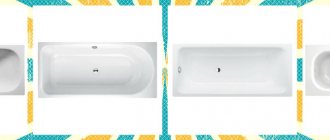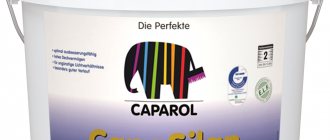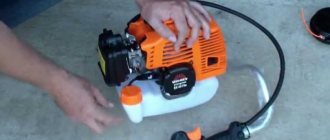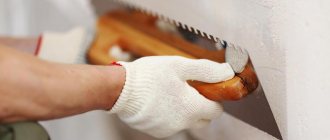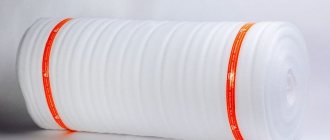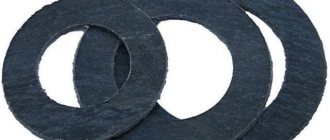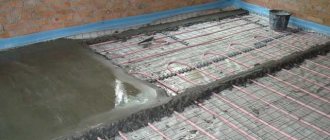Updated: 01/25/2021 17:38:49
Housewives carefully select kitchen accessories, because preparing meals for the family depends on them. Manufacturers supply many lines of cookware to the market. A good saucepan is used to cook soup, stew, or other dish. Women are thinking about choosing which pans are better - enameled or stainless steel?
The materials differ in performance characteristics and physical properties. They affect the speed of cooking and the taste of food. It is important to take a balanced approach to the issue and take into account cooking preferences.
Enameled pans
The classic option is an enamel pan. They meet in the kitchens of grandmothers and young girls. These products attract reasonable prices and are sold in stores and regular markets. They are versatile and cope well with their direct responsibilities. Enameled pots come in a variety of colors. This is important if you select accessories in color to match the kitchen design.
Physical qualities and performance properties play a role.
Advantages
- high thermal conductivity;
- preservation of beneficial vitamins and minerals in food;
- no emissions of harmful substances;
- heat retention for 2-3 hours;
Flaws
- fragility of the enamel coating;
- burning of food during prolonged cooking;
- ban on the use of aggressive cleaning products with abrasive additives;
Another important advantage is ease of care - they can be easily washed by hand or in dishwashers. They should be washed only with liquids or washing gels, and powders are prohibited. A typical problem for housewives is damage to the enamel. Over time, scratches and chips appear on the surface, especially if handled carelessly. It is difficult to clean burnt food; you have to look for alternative methods.
When choosing, you cannot rely on cheap models; it is better to choose products with a thick bottom. The enamel coating should not be less than 2 mm, otherwise it will quickly crack or burn out.
! The selection criterion is simple - the heavier the enamel pan, the better and more durable it is.
- To extend service life, it is recommended to follow simple rules:
- use only liquid detergents;
- do not rub the enamel with steel wool or hard brushes;
- do not place an empty one on the heating element;
- do not allow food to burn during cooking;
- Do not scrape off any residue from the bottom with knives and forks.
If you do not violate the instructions, then even after 5-7 years the enamel pan will look like new.
Let's weigh the pros and cons
To summarize the results of the information received, we will draw up a small table in which we will clearly see the pros and cons of both options.
| Possibilities | Enamel | Stainless steel |
| Price | + | — |
| Color selection | + | — |
| Easy to care for | — | + |
| Resistance to damage | — | + |
| Undemanding to detergents | + | — |
| Lifetime | — | + |
| Design | ? | ? |
The question marks in the last line of the table only indicate that the appearance of the gas stove you choose depends only on your taste and kitchen design.
Stainless steel pans
Modern material for making pans is stainless steel. Because of this, housewives are leaning towards these kitchen accessories. Stainless steel pans look stylish, laconic, they are light and durable. The products are in harmony with the interiors of the kitchen, cutlery, and appliances. Today, most kits are made from stainless steel.
In terms of operational features, stainless steel differs from an enameled surface, so you should remember its features.
Advantages
- resistance to acidic and alkaline environments;
- food practically does not burn;
- compatible with all types of cookers;
- wear-resistant coating;
- versatility of use - suitable for any product;
Flaws
- Not recommended for use in the oven due to plastic or rubberized handles;
- high price.
A stainless steel pan looks fragile and light in appearance, but in fact it can withstand heavy loads. The surface is not afraid of aggressive influences, so there are no restrictions in cooking. It warms up quickly, no time wasted waiting. Stainless steel pans are not demanding in terms of maintenance, so there are no problems with them.
! The main disadvantage is the high cost, so housewives sometimes choose enamel pans. But the extra money is completely worth it, because the material is truly durable.
When purchasing, pay attention to the brand and material. There are often fakes made of cheap steel on the market. Such pans quickly become stained and burn out. Stains are caused by salt solutions, so it is important to monitor the water level while cooking. Make a choice in favor of trusted brands, because they guarantee the quality of their products. Good stainless steel will not be cheap, so there is no need to skimp.
Special marks will help you understand the steel grade. The manufacturer places markings on the bottom of the product and on the packaging. Medical stainless steel is considered the best, distinguished from others by its high chromium to nickel content of 18/10. Cheaper varieties of steel are marked - 12/18, 12/13, 08/13.
Comments
You will suffer with stains on stainless steel. Enamel is our everything!
yes, I support it. I have a built-in oven and its panel is made of stainless steel. I have to wipe it all the time...
In my opinion, stainless steel is better. Stove cleaners tend to eat away the enamel. I have been using stainless steel for several years now.
Wipe the stainless steel, don’t wipe it - it doesn’t matter whether there are some kind of stains, or I don’t know what, I have such a frying panel - I can never get it perfect. And the way it scratches - it’s a complete atas
Enamel is better. You can wash it with passion, but scratches remain on stainless steel from cleaning agents. Stains after washing are natural.
What foods work well with enamel and stainless steel pans?
In the kitchen, it is better for housewives to have both pans. Each model has unique features. If this is not possible, then focus on the dishes that are prepared in the family.
The enamel pan is suitable for the following dishes:
- classic soups, borscht;
- preservation of food for the winter;
- boiling vegetables;
- cooking compotes, preserves.
Stainless steel pans are used in the following cases:
- classic soups, borscht;
- preservation of food for the winter;
- boiling vegetables;
- cooking porridge;
- stewing second courses.
The standard set of features is similar. Enameled pans make better compotes and jams, while stainless steel is used for preparing porridges and main courses. The second option is universal for everyday use. Porridge and main courses are also cooked in an enamel pan, but they often burn. It is better to leave it for jellied meat, compotes, and long-term boiling of meat.
Possible alternative
It is as follows: buy a stove in a combined version, the body is made of enameled steel, and the hob is made of stainless steel. The internal coating of the oven can also be in two versions.
Whatever stove you choose, don’t give up modern “bells and whistles” that will complement it with very important functions. We list them in order of importance:
- The gas control function will protect against accidental gas leakage;
- Electric ignition will eliminate the need to keep matches at home, and, therefore, reduce the risk of fire;
- The timer will not allow your favorite dishes to burn;
- Grilling will brown and crisp them;
- It is very convenient when the oven is equipped with lighting and a forced air circulation system.
In conclusion, I would like to say that according to statistics, more enameled slabs are sold. The final choice between enamel and stainless steel is up to the housewife!
Pans, which brand is better to choose?
The kitchen accessories market offers products from Russian and European manufacturers. You should focus on them first, especially when purchasing stainless steel pans.
Tefal
Market leader with many positive reviews. The products are famous for their innovative non-stick coating, strength and durability. In addition, Tefal cookware has an attractive design, so it will decorate any kitchen.
Berghoff
The Belgian manufacturer of kitchen accessories and tableware has won the trust of Russian housewives. The products of this brand belong to the top category. During production, the focus is on environmental friendliness, attractive design and durability. Experts say the main advantage is stainless steel, which is resistant to damage.
Rondell
The Russian brand Rondell is not inferior in popularity to its European counterparts. The company offers durable and practical tableware for every day. The main advantage is the balanced price-quality ratio. In this case, you won’t have to overpay for the brand.
Solingen
Solingen cookware is not as well known in Russia as other brands. But the German manufacturer offers kitchen utensils that are durable, strong, and wear-resistant. The models look elegant, close tightly with a lid and delight with additional details, for example, measuring scales.
In the following articles, our experts tell you how to choose a quality pan and the secrets of choosing a grill for your home.
Enamel
Enamel is a protective coating made of glass with impurities , which is applied to metal at high temperatures. The glass for enamel must have a lower melting point than the metal on which it is applied.
Liquid enamel spreads in a thin layer over the metal and hardens as it cools. To achieve greater strength, the enamel is applied in several layers.
Having tested a water heater with an enamel coating for the first time, engineers found that such a coating is not reliable enough, since it does not tolerate high temperatures. When water is heated above 60 degrees Celsius, microcracks , which contributes to its rapid destruction, since the thermal expansion of the coating is strikingly different from the expansion temperature of the steel tank itself. Water heaters with such a coating rarely work longer than 3-4 years.
But progress does not stand still, and manufacturers have found a way to extend the life of their creation. They began adding titanium powder to the enamel, carefully observing the proportions. If the enamel contains more than 4% titanium powder, it becomes brittle. But 3-3.5% titanium powder in enamel shows a wonderful result, extending the service life to 7-8 years , that is, two and a half times, due to equalizing the expansion temperatures of enamel and metal.
Types of water heater coatings
Water heater tank materials:
- steel: regular (always covered with a protective layer), stainless;
- plastic.
- enamel: self-leveling;
- glass ceramics (glass porcelain);
- titanium enamel (spraying).
According to the European standard DIN EN 12897-2016, the surface of the tank in indirect heating boilers, electric water heaters and heat accumulators and the body itself must withstand a minimum of operating cycles:
- 20,000 cycles with 1.5 times the operating (nominal) pressure (indicated in the TD);
- 10,000 cycles at 1.3x.
Separately, it is necessary to highlight the type of coating of the internal tank - titanium, applied by the electrostatic method. High adhesion and strength give the boiler a long service life with almost zero risk of peeling or damage to the layer. Products with titanium protection are rare and expensive.
Stainless steel tanks
Storage water heaters with a stainless steel tank were once classified as a premium class, but now they are also available in the middle price category.
The weak point is welded joints, where the metal loses its resistance to corrosion and oxidizes. With the beginning of the use of argon, vacuum welding, and cathodic protection, manufacturers reduced this minus to a minimum, but it still remains relevant.
- anti-corrosion thickness of the material, which is more effective than products with a thin protective layer;
- infrequent replacement of the magnesium anode (almost not required, some models do not have it);
- unpretentiousness, simple maintenance;
- Any changes in positive and negative temperatures . Overheating an empty container will not damage it (but you will have to replace the heating element and other parts);
- impacts and shocks are not scary: there is no coating, there is nothing to peel off. This and the previous point are the main difference between stainless steel and enamel .
- Even high-quality welding does not always protect against corrosion at the seams, since the process is aggravated by heating.
- possible metallic taste in water, allergy to alloying substances (vanadium, nickel). In practice, allergenic reactions are extremely rare. Ferrous iron may be hazardous to health, but not steel.
Glass ceramics
The birthplace of glass ceramics, otherwise called glass ceramics, is the USSR. This composite material was first discovered by the Soviet physical chemist Isaac Ilyich Kitaigorodsky (1888-1965). As a professor at the D.I. Mendeleev Moscow Art and Technology Institute, Kitaigorodsky devoted his entire life to the search for especially strong glass, and wrote a textbook on this topic, which was subsequently translated into several languages.
By combining starting materials, different types of glass and admixtures, the professor obtained a unique product used in a wide variety of industries. The professor's followers expanded the list of glass ceramics through experiments with different types of materials, various combinations of impurities and additives, and experiments with the proportions of the original raw materials.
Most glass ceramics are a range of materials that are distinguished by their strength and thermal stability; structures made from glass ceramics do not change their original size when exposed to high temperatures.
This coating is ideally suited for a metal water heater tank, since it does not attract lime particles , but repels them. The composition of the material prevents the formation of limescale build-up on the walls of the tank. The most famous example of glass ceramic is the surface of an electric kitchen stove.
The strength of the finished product is also influenced by the method of applying powdered sital to the metal. Today there are two methods: liquid and dry.
The liquid method is cheaper . That is why this method is often used in the manufacture of budget water heaters. The disadvantages of the liquid method are unevenness. Liquid tends to flow under its own weight, so the coating becomes thinner at the top and thicker at the bottom. The danger of a thin coating is explained by the presence of an aggressive air-water cushion at the top of the water heater tank, which leads to rapid corrosion of the material.
The dry method is more accurate ; glass ceramic is distributed evenly over the walls using electrostatic spraying. After firing at 90 degrees Celsius, the spraying firmly adheres to the surface of the tank and successfully protects the water heater from scale for 10-12 years, with proper care.

